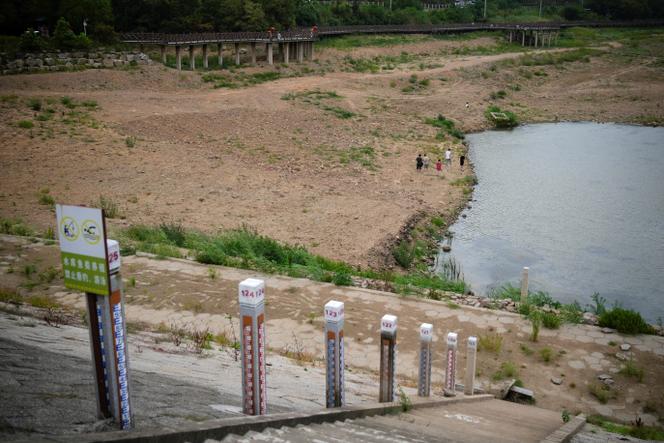- Share on Twitter
- Share on Messenger
- Share on Facebook
- Share by email
- Share on Linkedin
- Copy link
Genevieve Donnellon-May, a master's student at Oxford University, is an expert on water and food security issues in China. She is a regular contributor to several journals, including The Diplomat.
This summer, China experienced an exceptional drought in the Yangtze River basin. How does this local phenomenon affect the whole country?
Water poses significant and interrelated problems for China: not only the quantity of water (China holds only 6% of the world's water reserves), but also its quality and distribution are extremely problematic. For example, it is estimated that the northern part of the country, which is both highly populated and highly agricultural, has 25% of the population, 27% of the gross domestic product, but only 4% of the country's water resources.
Northern China is also dependent on groundwater, which provides 50% of industry's water needs, 33% of irrigation water, and 65% of water for domestic use. But this groundwater development has resulted in a significant decline in water levels in aquifers throughout the country. The aquifer in northern China is one of the most overexploited in the world. Due to intensive agriculture and irrigation development, much of the shallow aquifer has shrunk by 20 meters in recent decades, and by as much as 40 meters in some places.
You mentioned a water quality problem.
Yes, existing water resources are highly polluted. A 2016 study by the Chinese government indicated that 80% of groundwater is contaminated with pollutants, including heavy metals and arsenic.
To overcome the water deficit in the north of the country, Mao wanted to transfer some of the water coming from the south. Did this project come to fruition?
Mao had said, "The South has plenty of water, the North, much less. The North should borrow some." So China set out to build a megaproject: the South-to-North Water Diversion Project. To do this, it is using three routes. The eastern route transfers water from Jiangsu to Shandong and Tianjin, through the Grand Canal that has connected Hangzhou to Beijing for nearly 2,500 years. The central route runs from Hubei and brings water to Beijing and Tianjin. It has been operating since 2014. The western route remains to be built, for which there is an official plan, but also alternatives.
Read more Subscribers only Chinese agriculture faces the challenge of climate changeThe official plan, to connect the Yangtze to the Yellow River via the Qinghai-Tibet plateau, would divert 17 billion cubic meters of water per year. This is massive but less than the alternatives. The first is to build a dam in Tibet that would divert 200 billion cubic meters of water from Sichuan to Beijing each year. But this seems neither feasible nor necessary. Another semi-official option, put forward in 2017 by a team from Tsinghua University, is causing quite a stir: it consists of diverting 60 billion cubic meters of water each year from the rivers of the Qinghai-Tibet plateau, including three international rivers, the Mekong, the Salween and the Brahmaputra, to bring it to northwestern China, in particular to Xinjiang.
You have 35.13% of this article left to read. The rest is for subscribers only.
Lecture du Monde en cours sur un autre appareil.
Vous pouvez lire Le Monde sur un seul appareil à la fois
Continuer à lire iciCe message s’affichera sur l’autre appareil.
- Parce qu’une autre personne (ou vous) est en train de lire Le Monde avec ce compte sur un autre appareil. Vous ne pouvez lire Le Monde que sur un seul appareil à la fois (ordinateur, téléphone ou tablette).
- Comment ne plus voir ce message ? En cliquant sur « Continuer à lire ici » et en vous assurant que vous êtes la seule personne à consulter Le Monde avec ce compte.
- Que se passera-t-il si vous continuez à lire ici ? Ce message s’affichera sur l’autre appareil. Ce dernier restera connecté avec ce compte.
- Y a-t-il d’autres limites ? Non. Vous pouvez vous connecter avec votre compte sur autant d’appareils que vous le souhaitez, mais en les utilisant à des moments différents.
- Vous ignorez qui est l’autre personne ? Nous vous conseillons de modifier votre mot de passe.
Votre abonnement n’autorise pas la lecture de cet article
Pour plus d’informations, merci de contacter notre service commercial.
